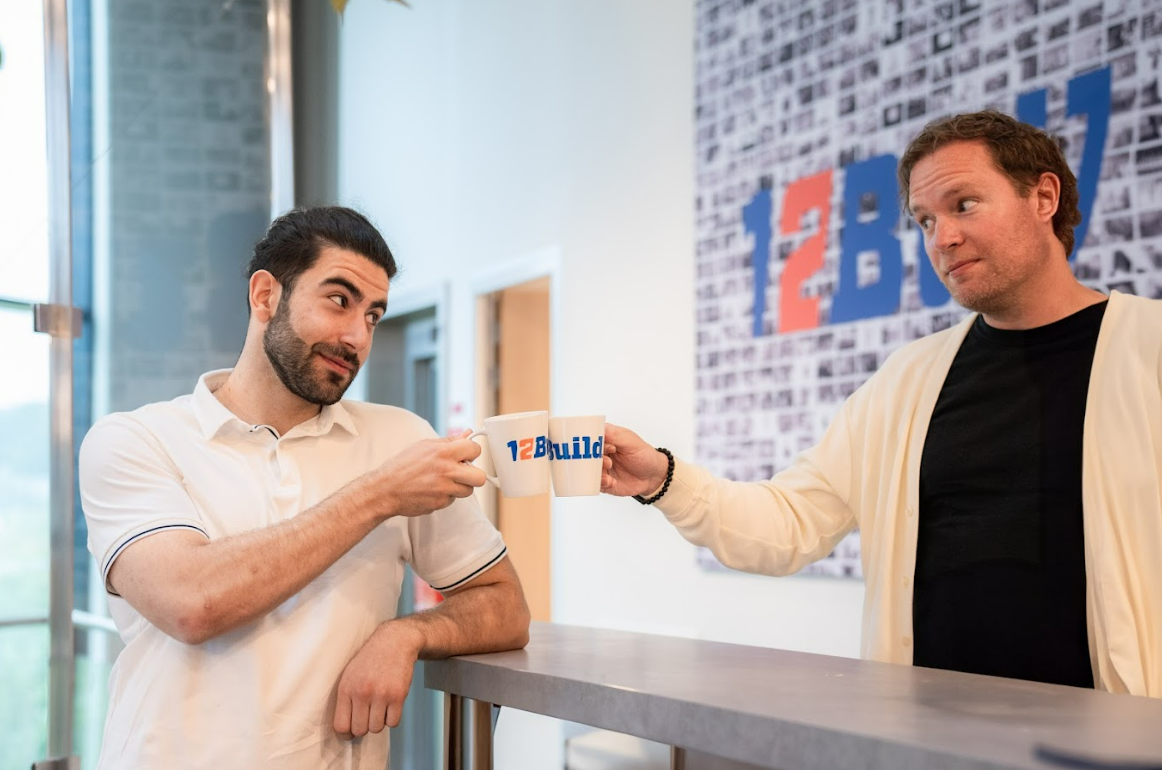In this blog, we share four practical steps to communicate more efficiently in your construction company. This way you will always be working with the most recent information and you will be able to minimize margins of errors.
Read on and find out how you can apply this to your projects.
Make sure everyone always has access to up-to-date information
Mistakes due to outdated information - hopefully, as a general contractor yourself, you might not have experienced it often. Yet it happens daily in the construction industry. Outdated plans or unreported changes often lead to unnecessary costs, delays and frustrations. In complex construction projects, it is especially challenging to keep everyone well-informed of changes in plans, schedules and specific details.
As a general contractor, it is your job to share important information promptly with involved parties, such as subcontractors, suppliers and architects. Sending an e-mail to all parties is often not enough. Not every change is relevant to everyone, resulting in emails not being read or only half-read. Moreover, the required files are often too large and difficult to send. This only complicates managing and sharing up-to-date information.
The larger the construction company, the greater the distance between internal departments and teams. This increases the risk of miscommunication. Without a good system, chaos grows and mistakes occur that are easily preventable.
Manage documents centrally
A centrally managed document overview can solve many problems. By storing construction plans, project plans and all communications in one place, everyone always has access to the latest information. This includes subcontractors, architects and your colleagues.
A central overview is just the beginning. In practice, plans are still printed out or stored locally on hard drives. This still causes errors and misunderstandings. Having a central place is a good basis, but good communication about changes is at least as important.
Step 1:
Professionalization - clear agreements and processes
To work together successfully, the basics must be in order. Professionalization starts with establishing clear agreements and processes. Make sure everyone in the construction project knows what is expected of them and how information will be shared.
Streamlined collaboration requires established protocols. Decisions must be approved before they are shared. Always have a clear structure around who is responsible for version control and updating documents.
An important step is to avoid common collaboration sticking points. According to Construction Dive, challenges often lie in miscommunication, unclear responsibilities and lack of trust between teams. Clear agreements prevent parties from maintaining their own working methods and ensure greater efficiency and fewer errors.
Step 2:
Digitization - use online tools for document management
The construction industry is in the middle of a digital transformation. Where paper plans and physical drawings used to be the norm, we are now seeing a shift to digital solutions. Tools such as Excel and WeTransfer provide a foundation, but there is a need for the next step. Consider project management software and platforms with real-time changes.
A cloud-based platform allows you to make documents centrally available anytime, anywhere for all parties involved. Whether it's construction plans, project details or communications, everything is accessible through one digital environment. This offers not only convenience but also security; everyone works with the same up-to-date information, regardless of their location or device.
Thanks to the digital approach, you make information more reliable and accessible. You eliminate manual errors while keeping an overview of the project.
Step 3:
Version control - always work with the latest version
In a construction project, plans change frequently. Without proper version control, there is a chance that parties are working with outdated information. This leads to errors, delays and unnecessary costs.
With an effective version control system, it will always be clear which version is valid. A change log ensures that you have insight into who has changed what and why. It is important to prevent users from storing old versions locally.
Yet research by M-Files shows that many companies in the construction industry struggle with this. For example, 67% of construction employees reported that documents are difficult to find due to confusing file names or poor categorization. In addition, 68% reported that the most recent versions of a document cannot be found.
Always work from a central platform where the latest version is automatically available. Version management ensures that all your construction projects are structured and without misunderstandings.
Step 4:
Messages and notifications - targeted communication
Targeted communication is important to share relevant information promptly. In practice, a lot of important information gets lost in a flood of emails and messages. When everyone receives everything, it becomes difficult to determine which updates are truly relevant. Misunderstandings occur and crucial changes are missed, leading to delays and unnecessary errors.
An effective platform provides the ability to send notifications to the right people based on their role in the project. That way, only those who need to take action get the information relevant to them. Think of subcontractors getting only the updates that affect their tasks, while the project manager receives a broader overview. A targeted approach keeps communication clear and brings everyone the same expectations.
With smart notifications and clear messages, you ensure that involved parties have immediate access to the information they need, without being unnecessarily overwhelmed. This does not foster collaboration and prevents missed updates.
Getting started with the construction sourcing platform
Prevent errors from misinformation and collaborate more efficiently in your construction company? A sourcing platform helps you streamline document management and communication. With such a platform you can easily manage plans, keep track of version control and send targeted notifications to the right people involved.
At 12Build, we offer a sourcing platform designed specifically for the construction industry. Our strong links to tools like Dalux and Sharepoint ensure that information and communications always end up in the right place.




